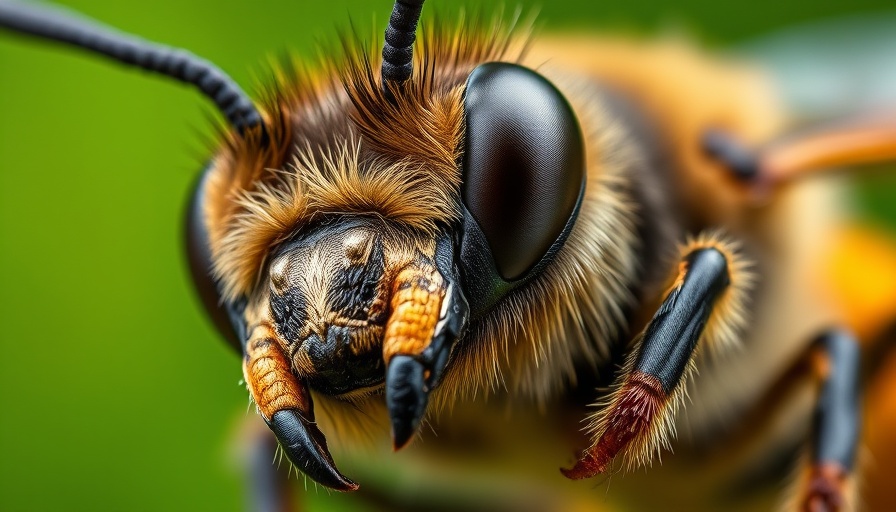
Revolutionizing AI: Insights from Tiny Bee Brains
Recent research from the University of Sheffield has unveiled a fascinating aspect of how bees utilize their flight movements to enhance brain signals, paving the way for smarter artificial intelligence (AI) methodologies. This research indicates that even the minuscule brains of insects can provide significant insights into intelligent design, shifting the paradigms for the development of next-generation AI technologies.
The Hidden Complexity of Bee Intelligence
Bees have long been admired for their remarkable precision in navigating complex environments and identifying patterns within their surroundings. The study reveals that bees sharpen their perceptual capabilities through specific body movements during flight, leading to enhanced brain signal clarity. This duality of brain function and movement showcases a natural strategy that could dramatically alter how AI systems are engineered. Rather than relying solely on extensive computational resources, integrating movement to process information is a promising direction.
Nature’s Algorithms: The Bee Brain Model
The research team created a digital model of a bee’s brain to illustrate its functioning explicitly. This model demonstrates how the bees' movement generates distinct electrical signals that help them distinguish between complex visual stimuli like flowers. This revelation suggests that AI and robotics could benefit significantly from adopting strategies similar to those used by bees, combining biomechanics with cognition to enhance learning and recognition.
Implications for Robotics and AI Development
As Professor James Marshall from the University of Sheffield highlighted, harnessing the efficiencies discovered in nature could lead to a substantial leap in AI capabilities across various domains, including robotics and self-driving technology. By employing movement to gather and interpret data, the next generation of robots could operate more intelligently without overwhelming computational networks. This efficiency mirrors how thousands of years of evolution have honed the capabilities of bees, making them masters of their environment.
Cultural Significance: Bees as Role Models
There is more than just a technological narrative at play here. The interdisciplinary approach of studying bees taps into broader discussions around environmental respect, resourcefulness, and innovation. As global issues regarding sustainability and artificial intelligence's societal impact soar, the lessons learned from bee behavior offer a profound reminder: intelligence comes not merely from size or power, but from the synthesis of mind and movement, adapting gracefully to external challenges.
Future Predictions: A Shift in AI Paradigms
Looking ahead, the integration of bio-inspired strategies in AI design suggests a future where technology is not just omnipresent but harmoniously attuned to environmental realities. Robotics could evolve to exhibit behaviors closer to those of living organisms, making them not just tools but partners in various sectors, from agriculture to healthcare, enhancing productivity while minimizing resource reliance.
Actionable Insights: Moving Toward Bio-Inspired Robotics
For engineers and developers looking to adopt these findings, the implications are clear: rethinking AI design to incorporate movement-based processing will not only enhance efficiencies but also encourage interdisciplinary collaboration. Engaging biologists, cognitive scientists, and engineers could forge pathways toward creating more intuitive and responsive technologies.
Conclusion: Nature’s Blueprints in Technology
Bees may be small, but their brains hold critical insights that could redefine artificial intelligence as we know it. Their efficiency in recognizing patterns through movement challenges conventional AI designs based on computational heft, reminding us that wisdom sometimes stems from the simplest forms of nature. As we advance toward a future shaped by these principles, it is imperative to look to the natural world for innovation strategies that align with sustainable practices.
To explore innovative advancements inspired by nature, be sure to engage with the latest developments in AI research and robotics. Harnessing insights from even the smallest creatures can lead us to transformative technological breakthroughs, where intelligence flourishes not through size but through synergy.
 Add Row
Add Row  Add
Add 




Write A Comment